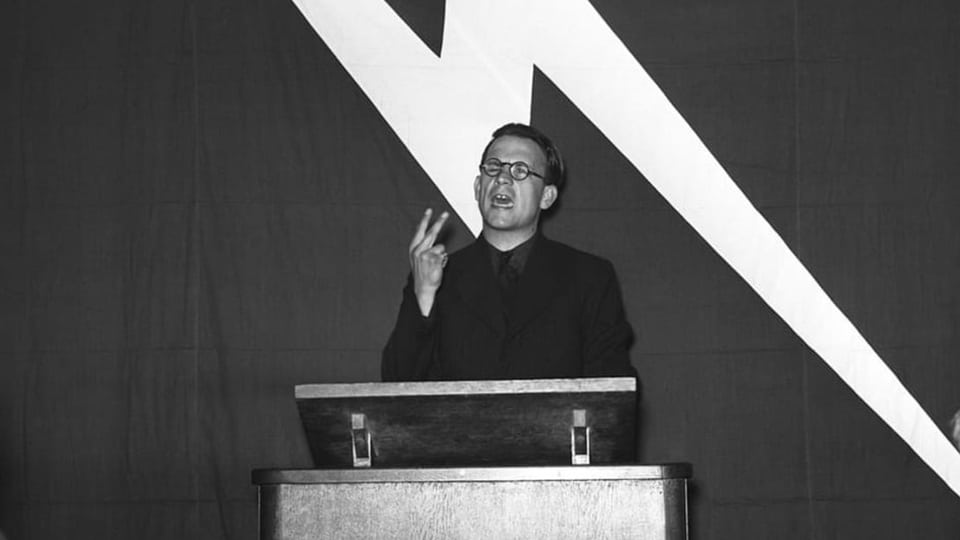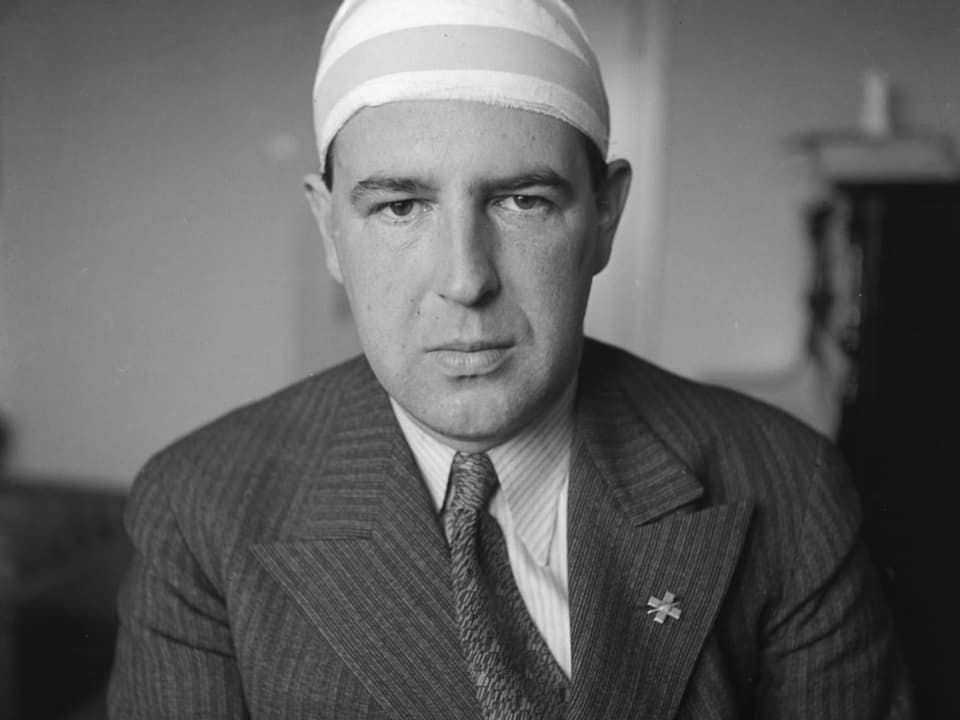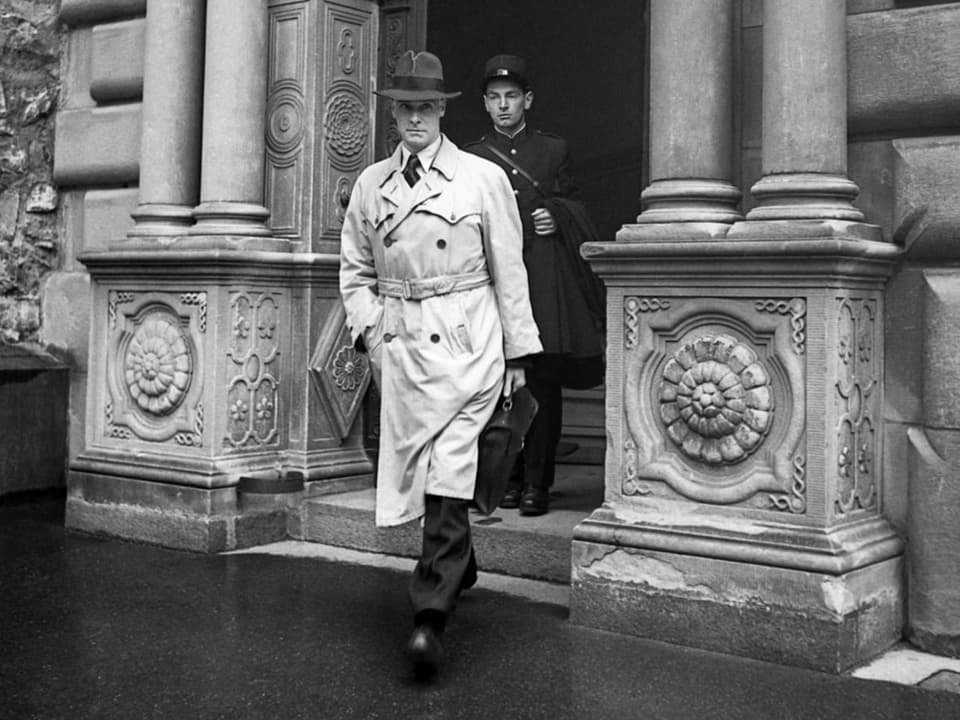Contents
Hate speech and shouts of Harus: In the 1930s, the fronts strove for an authoritarian state in Switzerland – and found fertile ground.
The year is 1929. The linguist Hans Kläui has completed his dissertation and is looking for work. He wants to be a teacher. But despite his doctorate, he couldn’t find a job.
In his frustration, Kläui looks for scapegoats and finds them in the Jews. “You meet these crooked-nosed figures at every turn who are taking jobs away from our Swiss academics,” he would later write.
longing for authority
The anti-Semitic ideas and the economic misery drove him into the arms of the National Front, a fascist group that began in student circles in Zurich.
Legend:
Hans Kläui (middle) during his time as Gaufuhrer for St. Gallen: In this function he was supposed to recruit new members for the National Front in Eastern Switzerland.
St. Gallen State Archives
It is one of many organizations that are summarized under the term front movement. What they have in common is that they yearn for an authoritarian leadership state – modeled on fascist Italy and later Nazi Germany.
Hans Kläui begins to write for the frontist press and thus shapes the programmatic orientation of the movement. Within a short time, various magazines with a right-wing extremist orientation were created.
Hate speeches and greetings from the Führer
Many other young men are like Hans Kläui. The 1930s were also economically difficult times for Switzerland. Unemployment soars sharply, from 0.4 percent in 1928 to nearly 5 percent in 1936. In politics, the 1918 national strike continues to reverberate, and a deep gulf separates the left from the right.

Legend:
For the aesthetics, the fronts look at the neighboring countries. Here you can see Heinrich Eugen Wechlin, the founder of the Federal Social Workers’ Party, which was part of the front movement.
Keystone/Photopress Archive
This is fertile ground for political fringe phenomena such as the front movement, which attracts supporters from almost all walks of life and age. They copy the political style from neighboring countries: they organize mass marches with flags, uniforms, salutes from the leaders and diatribes. Street brawls between bigots and socialists are not uncommon.
Fascism with a Swiss touch
However, the front movement also gives fascism a Swiss touch. The circle of spiritual leaders, to which Hans Kläui also belongs, reflects on the old Confederation. They see the corporate society of the time as a model for an authoritarian Switzerland of the 20th century.
The movement reached its peak during the so-called front spring after Hitler seized power in 1933. In the National Council elections in 1935, the only ones in which the fronts took part, they won seats in Zurich and Geneva.

Legend:
Robert Tobler was elected to the National Council in 1935 for the front movement. He wears the head bandage because of a fight on the street.
Keystone/Photopress Archive
After that, the movement loses momentum. A large majority of the Swiss population is extremely skeptical about authoritarian posturing in the style of Nazi Germany. The fronts will no longer stand in the next national elections.
the past remains secret
After the war, the former “Frentler” were marginalized at first, many were sentenced to prison terms and socially ostracized. In January 1941, Hans Kläui was imprisoned for two weeks for dangerous propaganda.

Legend:
One of the most prominent frontists was Max Leo Keller, who emigrated to Nazi Germany and became director of the Hermann Göring works. After his return to Switzerland he was sentenced to 13 years in prison in 1948.
Keystone/Photopress Archive
The Cold War is his and the happiness of many indulgers: the anti-communist hysteria of the western world opens a door back into society for them. Bourgeois Switzerland welcomes everyone who stands with her against the red menace from the east.
Hans Kläui became a respected local historian in Winterthur, and he consistently kept quiet about his right-wing extremist past.
